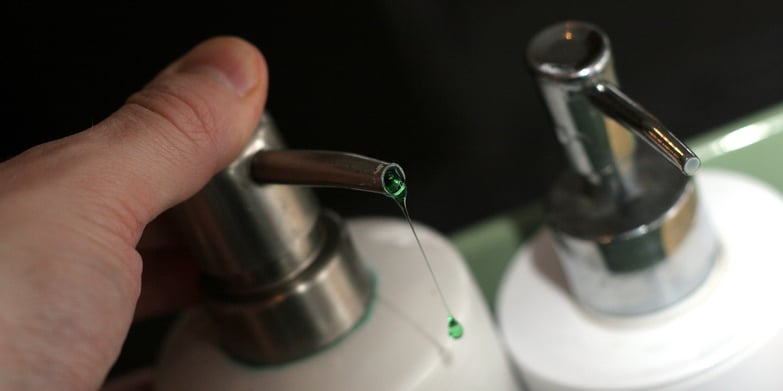
Refractive index is an optical characteristic of a substance and the dissolved particles in it. When manufacturing personal hygiene products this principle is used to get desired qualities in the final product.
For example when producing a make-up that reflects light, giving the user a glowing complexion, raw materials that refract and reflect light such as mica would be chosen. The opposite is true when producing a product to hide lines in the skin; materials that absorb light and have low refraction such as iron oxides are utilized.
This principle is carried over to lotions and hair products as well. Silicone compounds are added to shampoos and conditioners to enhance shine. Due to its high refractive index that is close to that of hair, phenyl dimethicone is a silicone compound often present in leave in conditioners. A recent market trend in personal hygiene products is clear gels, seen in deodorants, hand sanitizers, shampoos, and so on. In order to achieve a gel that is clear, the refractive indexes of the aqueous and nonaqueous components must be matched in the emulsion.
Refractive index is defined as the ratio of the speed of light in a vacuum to the speed of light in the substance of interest. As a result of this property, light will “bend,” or change direction, as it travels through substances of different refractive characteristics or densities. When passing from a material with a higher refractive index through a lower refractive index, there is a critical angle at the interface of where the two substances meet, at which light can no longer refract but will instead reflect. This critical angle is used to easily calculate the refractive index, since it is known for the materials used in personal hygiene production.
The refractive index of a substance is strongly influenced by temperature and the wavelength of light used to measure it. Therefore, care must be taken to control or compensate for temperature differences and wavelength. Refractive index measurements are typically reported at a reference temperature of 20°C (nD20) or reported uncompensated (nD).

Typical n values for common aqueous solutions.
A manufacturer of lotions, creams, shampoos, and body washes was looking to measure the refractive index of their final products and raw material ingredients for quality control and reporting purposes. A typical product such as body wash contains water, surfactants or detergents, anti-bacterial compounds, fragrances, essences, and (sometimes) pH adjusters. Measuring the refractive index of a raw material or a final product, while not an indicator of individual component concentrations, is important to ensure consistency of that product from batch to batch. Refractive index of a final product can indicate that all components are present in the correct concentrations, ensuring the final product will exhibit the desired qualities.

For this need, the customer’s laboratory intern identified the Digital Refractometer for Refractive Index and Brix - HI96800 for the measurement of refractive index and % Brix in aqueous materials on the Hanna Instruments company website. The laboratory manager was pleased at the price being a fraction of competitor costs and that the refractometer directly reported refractive index.
They also appreciated the automatic temperature compensation (ATC) feature and the wide range for temperature compensated refractive index measurement, from 1.3330 to 1.5040 nD20 with a high accuracy of ± 0.0005 nD20. They felt the stainless steel sample well was easy to clean and the three-button operation was simple for “non-science” people to use. Overall, the laboratory manager and intern felt this was a perfect fit for their quality control and reporting requirements.
That's why we've dedicated our blog as a helpful resource for you to use! Catch up on the latest products, explore industry trends, discover testing tips, learn how to improve results, and more. Got questions? Email sales@hannainst.com.

